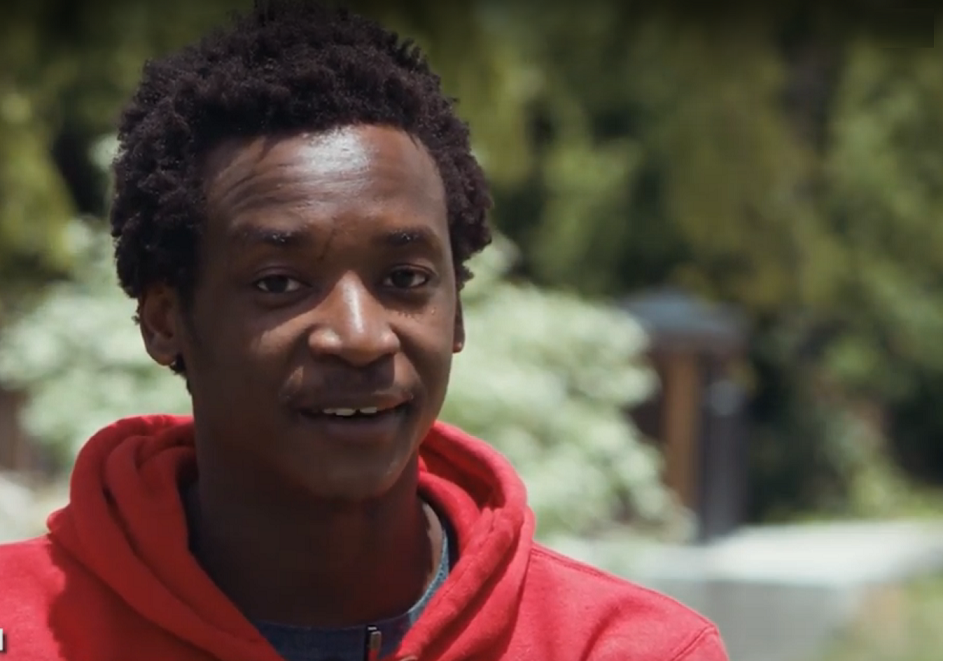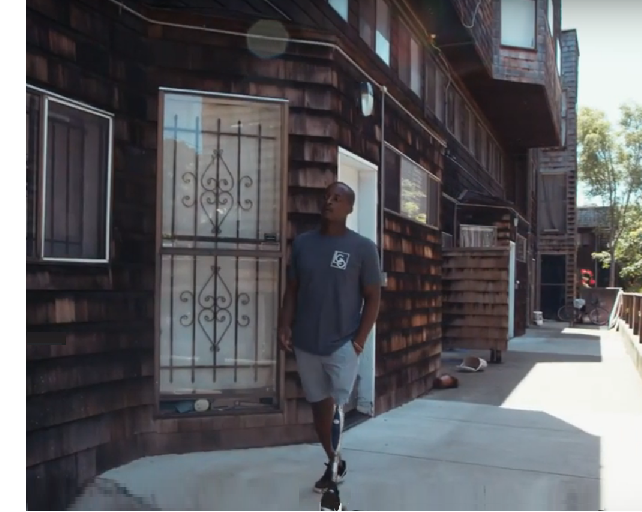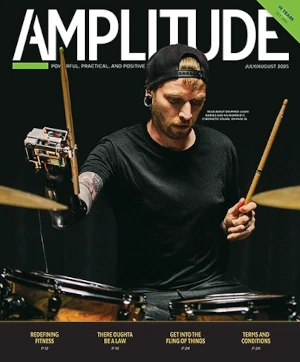
If you were going to design an ideal candidate for osseointegration (or OI) surgery, they might look something like Munya Mahiya. You’d create somebody young, athletic, and healthy; somebody who’d tried and failed, over a long period of time and in multiple iterations, to find a socket prosthesis that worked; somebody with solid insurance coverage; somebody who was 100 percent committed to the procedure and determined to make it successful.
All those factors explain how Mahiya, a left above-knee amputee, became one of the first civilians to undergo this next-generation surgery in the United States. He had the procedure done in early 2018 as patient #7 at the International Center for Osseointegration Research, Education and Surgery (iCORES), based at the University of California at San Francisco (UCSF).
As you probably know by now, osseointegration surgery involves lodging an implant within the bone of the residual limb, and then attaching the prosthesis to an external fitting. The iCORES program is one of several that’s involved in FDA approval trials for this surgery, which is on track to be widely available in the U.S. within a few years. Patients in Europe, Australia, and elsewhere have largely had encouraging outcomes, creating great anticipation among American amputees. But there are still only a few thousand amputees worldwide who’ve had the procedure, and a lot of unknowns remain. And the biggest unknown about OI is the most personal: If and when it gains FDA approval, will it be a good option for me?
For Munya Mahiya, it was a no-brainer—yes, emphatically, osseointegration made sense for him. Here are some of the key things that made him such a perfect candidate, and some of the benchmarks you should use if you’re ever seriously considering this procedure.
1. Socket prostheses failed miserably for him.
“Wearing a socket was really hard for me,” says Mahiya, a recent graduate of the University of California. “My residual limb is very small, only about five inches. Just walking around on a daily basis was unforgiving [in a socket]. It was work. Sometimes my leg would come off while I’m walking across campus, and I’d have to find a way to get it back on. I was sweating all the time, and it was very hard to keep my socket clean.”
It got to the point that Mahiya almost completely abandoned socket prosthetics. By the time he graduated, he was getting around mainly on crutches or in a wheelchair. His mobility was so limited that osseointegration held little downside risk for Mahiya. Even a modestly successful result would have meant a huge improvement over the status quo. But most calls aren’t quite this easy. For an amputee who can use a prosthesis, say, six hours a day—or who can wear one four days out of seven—the risk versus reward might not be as clear-cut. You might expend great toil and treasure but end up no more mobile than before. In a worst-case scenario (although such instances have been very rare) you might actually feel that you’ve ended up worse off than when you started.
2. He was young, healthy, and physically fit.

Mahiya lost his leg at age 15 and was only 23 when he underwent his OI procedure, still young enough to have dense, robust bone tissue. Those characteristics gave surgeons an excellent chance to place the attachment securely within the bone, and they made Mahiya’s residual femur more apt to heal quickly and graft firmly to the implant. Again, most cases aren’t so one-sidedly favorable. Prospects for implantation and healing are likely to be dicier at age 42 or 62 than at 22, and a residual bone that’s suffered damage (from trauma, cancer, inactivity, or other causes) might offer less sturdy anchorage for the implant.
Another reason Mahiya’s youth and overall health mattered is that a significant percentage of osseointegration patients experience post-surgical infections. Most of these complications aren’t serious and can be treated with antibiotics, but there’s always the risk of a deep tissue infection that requires more aggressive intervention. And any infection is a concern in older patients and/or those who have diabetes, heart disease, kidney problems, or other health challenges commonly associated with limb loss.
The bottom line is that successful outcomes in OI depend heavily on the health of your residual limb and your overall physical condition. Ensure that your body is healthy enough to support a good result before you move forward.
3. Mahiya wasn’t active in high-impact, high-torque athletics.
“The doctors advised me not to do any contact sports with my new prosthetic,” says Mahiya. “I can’t run or jump. I would love to do those things, but I had to give them up because I needed to walk first.”
For many amputees, this would be a deal-breaker. Running and jumping are highly discouraged, if not outright forbidden, after osseointegration; the same goes for skiing and snowboarding. And these sacrifices don’t have an expiration date. You’d be giving up those activities once and for all.
In Mahiya’s case, the tradeoff was easy. The sport he competes in seriously, wheelchair basketball, is perfectly acceptable after OI surgery. There’s no prohibition on hiking or bicycling; on the contrary, both are easier to pursue after the procedure. “I can lift weights at the gym,” Mahiya says, “and at work I’ve been carrying bags of concrete on my shoulder at a construction site. So I gave up running, but what I got back is far more than that.”
But what if you love to run? What if you’re a high-intensity skier? “If you’re passionate about those things,” says Mahiya, “then osseointegration is not something I would advise you to do.
4. He did a lot of research.
By the time Mahiya left his native Zimbabwe for America in 2014, osseointegration had become relatively common in Europe and other parts of the world, so he arrived in the U.S. with a good general grasp of the surgery’s risks and rewards. Once here, he got a crash course in socket technology, giving trial runs to various systems. So he already had a deep knowledge base when iCORES approached him in 2017 about participating in its FDA approval study. Even so, he delved further into the details and examined his options from every angle before committing to the surgery.
“You have to know your amputation,” he says. “You have to know why the current prosthesis doesn’t work, and how the procedure is going to make things work better. I knew that [with OI] the prosthesis engages the skeletal frame and helps you use the muscles more efficiently. When they presented this to me, I became convinced it was one of the only options that might work. If I wanted to function, it was something I needed to try.”
Mahiya’s Happy Outcomes
Two years in, Mahiya is thrilled with the results of his osseointegration procedure. He’s on his feet constantly—walking, hiking, bicycling, working construction. He’s had no significant post-surgical complications, and his rehab came off without a hitch.
“I feel so grateful,” he says. “I use my skeletal plane a lot better than I ever did with a socket prosthesis, and that gives me a big advantage when I’m walking. I use less energy, and I don’t get nearly as tired. My new prosthesis only weighs 8 pounds, while the one I had before weighed 14.”
“The other thing, which I wasn’t expecting, is that I almost never have phantom sensation,” he adds. “I can feel the ground when I step on it. I can tell the difference if I’m walking on sand, versus walking on tarmack. If I’m out hiking with my friends, I don’t have to watch my foot when I step anymore.”
Not every amputee will have as easy a time with OI as Mahiya did, but his case still serves as a useful benchmark. He represents the optimal scenario, where the procedure’s costs are far outweighed by the potential benefits. Mahiya’s experience illustrates this procedure’s potential to transform amputees’ lives.



